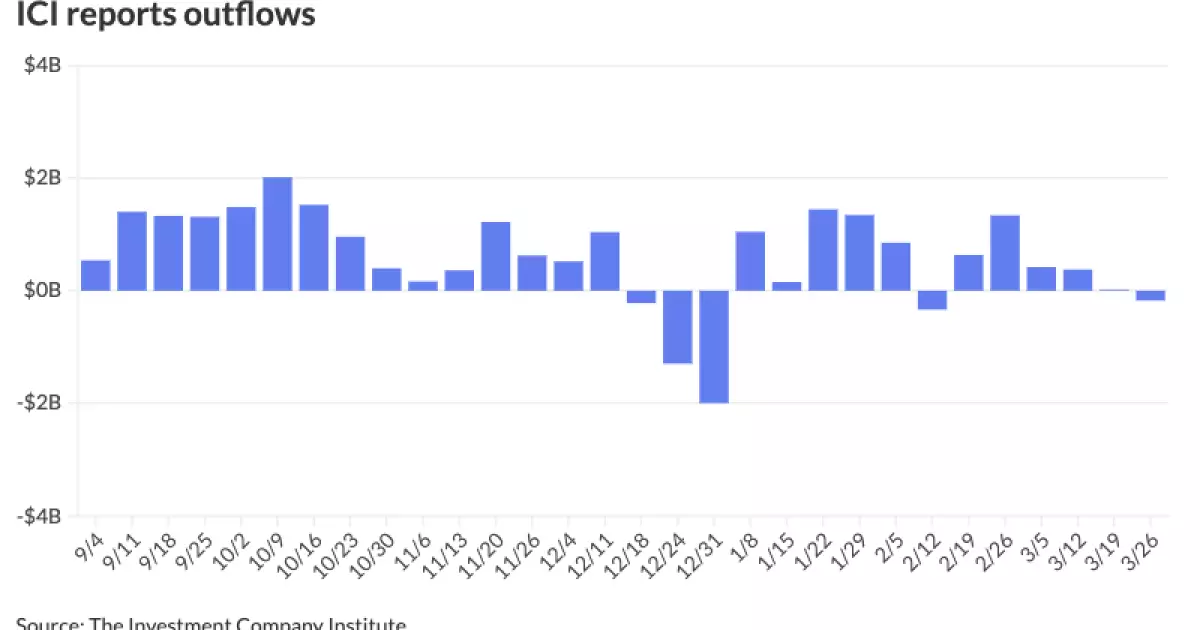In the ever-changing realm of global finance, the unpredictability of economic policy, particularly concerning tariffs, remains a formidable force driving market volatility. The recent speech from former President Donald Trump, delivered from the Rose Garden, unveiled a slew of sweeping tariffs that left investors both bewildered and apprehensive. This disarray is not just a fleeting moment of panic; it points to a deeper malaise within the economic framework, where confidence is continually undermined by policy ambiguities. Political leaders often ignore the foundational principles of free enterprise at their own peril, and the implications of such oversight are now materializing in a tangible way.
The Tariff Tango: Leverage and Uncertainty
Trump’s announcement of potential new tariffs bore an unsettling resemblance to a high-stakes poker game, where those at the table are forced to make critical decisions without a full understanding of the rules. J.P. Morgan strategists have expressed that the government may utilize tariffs as leverage against perceived unfair trading practices, but they admit that the haze of uncertainty leaves investors vulnerable. When critical details are obscured, confidence in market fundamentals wanes, replaced instead by an environment permeated by fear.
Herein lies a critical paradox: while the global economic expansion appears robust on paper, the incessant drumbeat of policy unpredictability generates a cascade of caution and hesitance among corporate leaders and investors. The fear of repercussions stemming from these tariffs, in conjunction with tax reforms and spending cuts, clouds the vision of those steering large financial ships. Dissecting this situation, one must question whether the short-term electoral gains sought by policymakers outweigh the longer-lasting repercussions that pummeling market confidence can unleash.
Stagflation: The Unwelcome Guest
Economic health is ultimately defined by the dual engines of growth and stability. However, as suggested by James Pruskowski, chief investment officer at 16Rock Asset Management, the emerging trends point perilously toward stagflation—a scenario that can dismantle the very fabric of economic resilience. With rising recession risks tied closely to the uncertainty surrounding tariffs, industries previously buoyant now brace for impact, as indicated by FedEx’s alarming profit warnings. The Federal Reserve remains fixated on controlling inflation yet seems oblivious to the creeping dangers of stagnation.
This apparent neglect has created a fertile ground for speculation. Markets are now reacting not just to policy announcements but to a broader atmospheric sense of instability. When the confidence of CEOs is wavering, anxiety spreads among investors, wherein upper echelons of firms begin to tighten their belts, curtailing investments and delaying projects. This cycle self-perpetuates into a culture of caution, nudging the economy further towards a state where panic eclipses healthy growth.
The Municipal Bond Market: A Shaky Foundation
Even more troubling is the outlook for municipal bonds. Market participants observe tightening liquidity and a burgeoning stress factor in sectors such as healthcare and higher education. The looming possibility of capping the muni bond tax exemption at 28% raises alarm bells, even if historical attempts to implement such caps have failed. The ability of cities and states to access affordable capital hinges on an unencumbered market; any disruption could trigger a funding crisis affecting essential public goods and services.
This precarious balance affirms a vital truth: the muni bond market is not just an investment vehicle; it serves a critical role within our public infrastructure. Yet, uncertainty drives out weaker entities and stifles creativity in financing critical projects. True liberalism thrives on the ability of diverse markets to flourish; when one element like the munis becomes risk-laden, the entire system loses resilience.
Geopolitical Underpinnings: A Compounding Factor
As layers of economic instability stack upon one another, geopolitical tensions become the wild card that can upend even the most steadfast economic forecasts. The integration of global interconnectedness means that local tariffs may have international ramifications. Trade relationships can sour swiftly and unpredictably, leading to retaliatory measures that further spiral markets into disarray. The very notion of “America First” may crystallize into isolationism, rendering our economy vulnerable to external shocks.
Private corporations are already beginning to recalibrate their global strategies, leading to a contraction of international engagement. Smart investors must take note of this shift; the integration of tariffs with geopolitical risk creates an environment ripe for disruption. The question remains whether the electorate will comprehend the long-term consequences of such decisions when they inevitably come knocking after a prolonged period of adaptation and shifts in the socio-economic framework.
Looking Ahead: Navigating the Rough Waters
With the specter of policy volatility looming large, how can investors and economic observers proceed? The key lies in establishing resilience in decision-making and maintaining a balanced perspective amidst the storm. Market corrections often present opportunities for strategic positioning. Understanding the interplay between tariffs, economic policy changes, and corporate behavior will be crucial in navigating the turbulent waters ahead. In an era where fear dominates, those intelligent enough to exercise calculated risk-taking may emerge ahead, reinforcing the very principles of liberalism that foster innovation and prosperity in a free market.

